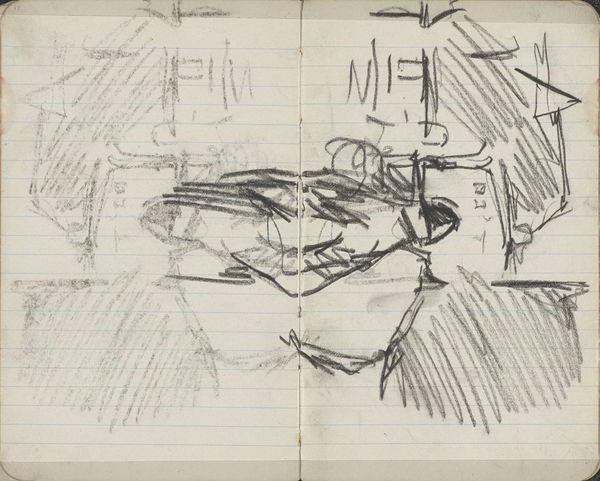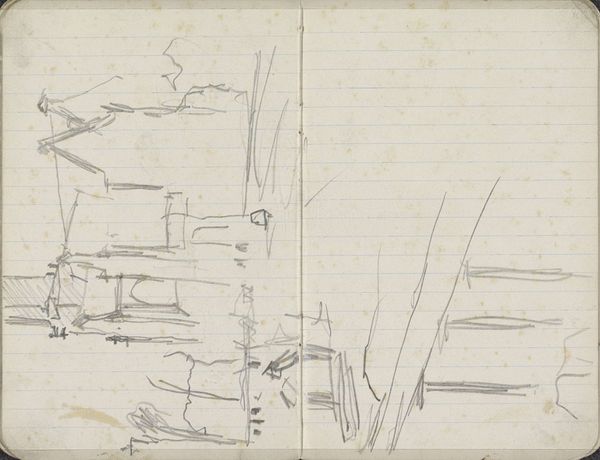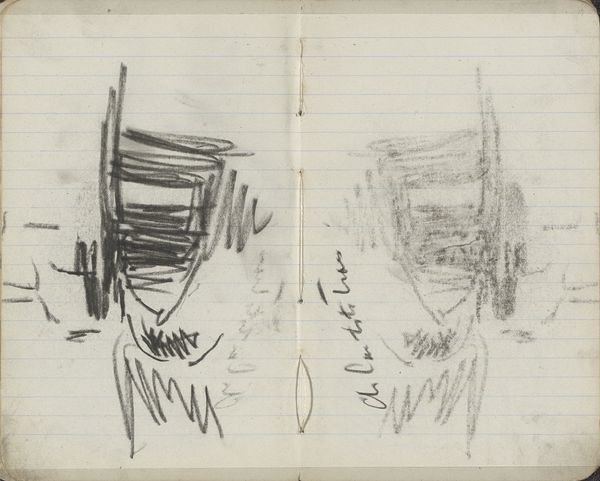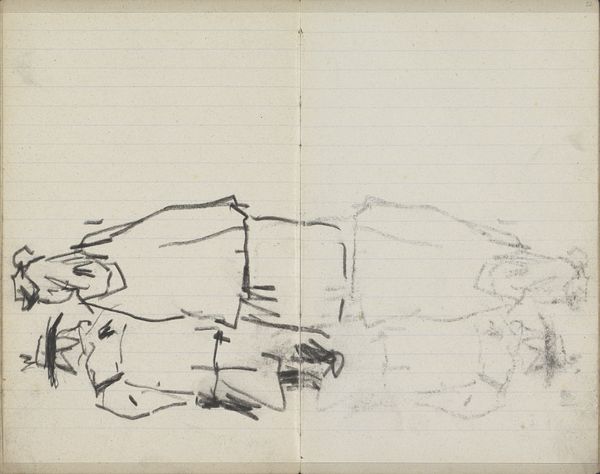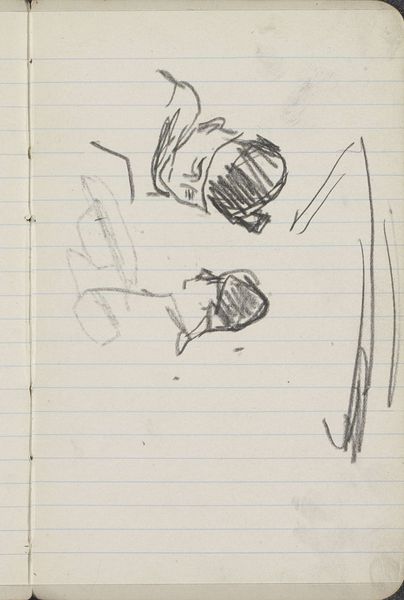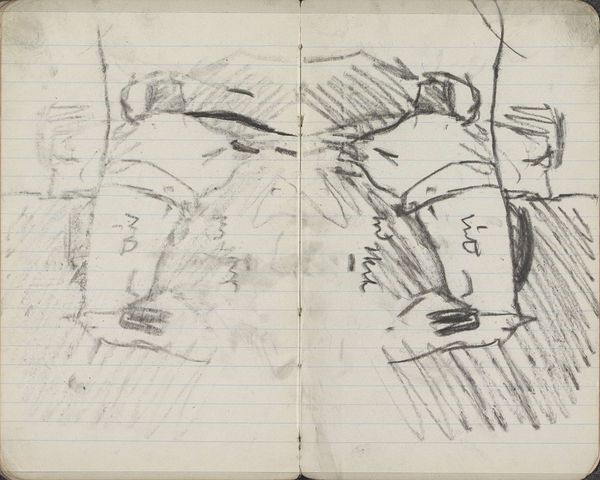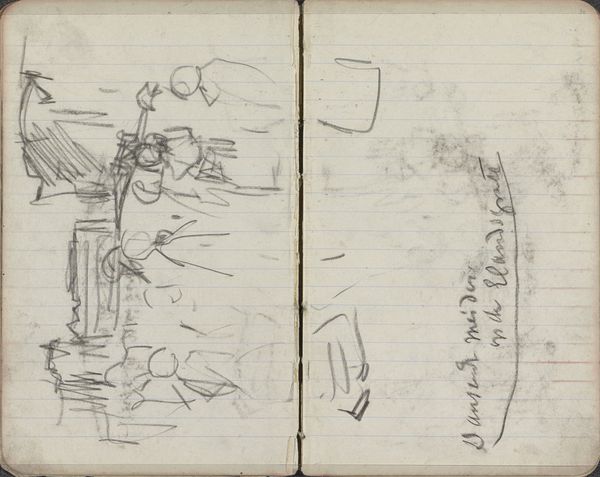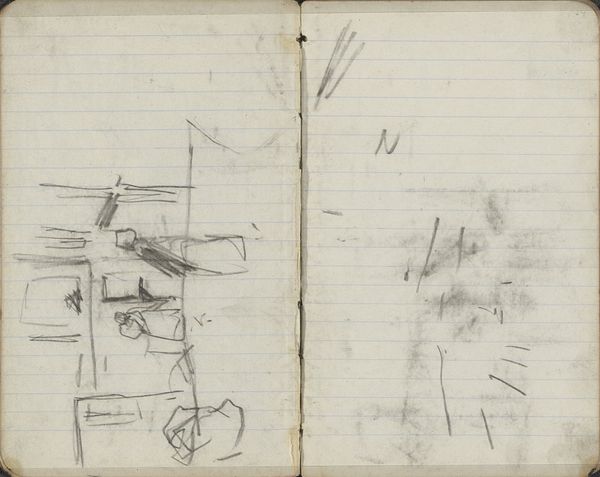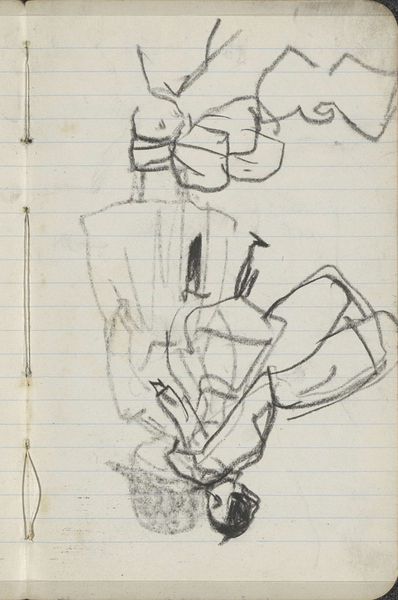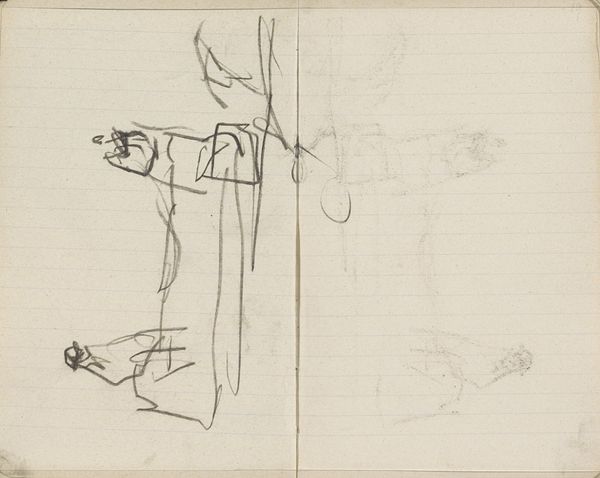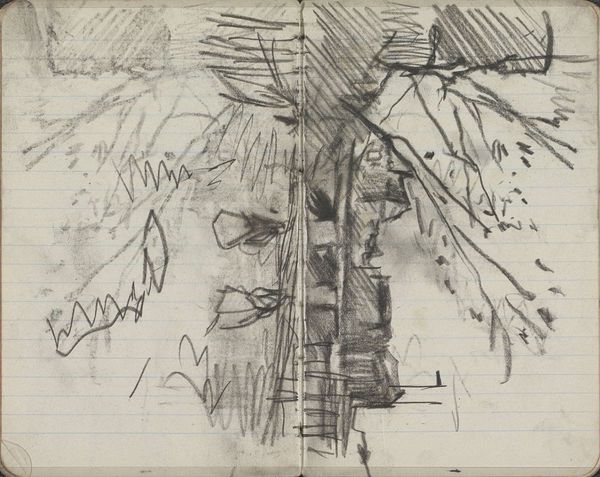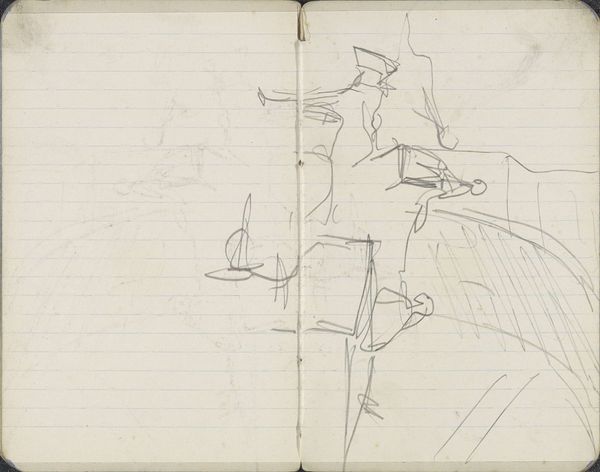
drawing, paper, graphite
#
drawing
#
paper
#
abstraction
#
line
#
graphite
#
modernism
Copyright: Rijks Museum: Open Domain
Editor: Here we have George Hendrik Breitner’s “Trampaard” from 1893, a graphite drawing on paper held at the Rijksmuseum. It’s strikingly abstract, almost like a Rorschach test. What jumps out to you when you see this piece? Curator: What interests me most is the labor evident in its creation. Notice how Breitner uses the readily available materials—graphite and lined paper, likely a sketchbook page—deconstructing the traditional hierarchy that separates "fine art" from everyday sketching. The quick, repetitive strokes suggest a process of rapid documentation. Editor: So you see value in the materials themselves, beyond just what's depicted? Curator: Absolutely. The materials and method of production challenge the notion of art as something precious and rarefied. He's capturing the fleeting moment, prioritizing the act of drawing and seeing over creating a polished product. Where was Breitner working, and what social context surrounds this particular "tram horse?" How was this horse used? Editor: So it's like the process and social use become the point? I was so focused on trying to "see" something representational. Curator: Exactly! It shifts our focus to the conditions of artistic production and consumption. Breitner, working in a rapidly industrializing Amsterdam, draws our attention to the working class. The act of sketching, almost furtively, on inexpensive lined paper, highlights this relationship between art, labor, and urban life. How might that insight reshape how we see similar sketches from the period? Editor: I never thought about the cost and accessibility of art materials being so intrinsically linked to the subject matter. Seeing it that way makes the piece much more engaging and meaningful to me. Curator: Precisely! By examining the material conditions, we gain a deeper understanding of the artist's intent and the broader social forces shaping artistic expression. It invites us to question established aesthetic values and consider art as a reflection of its time.
Comments
No comments
Be the first to comment and join the conversation on the ultimate creative platform.
